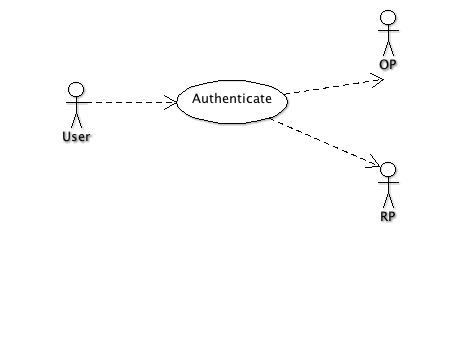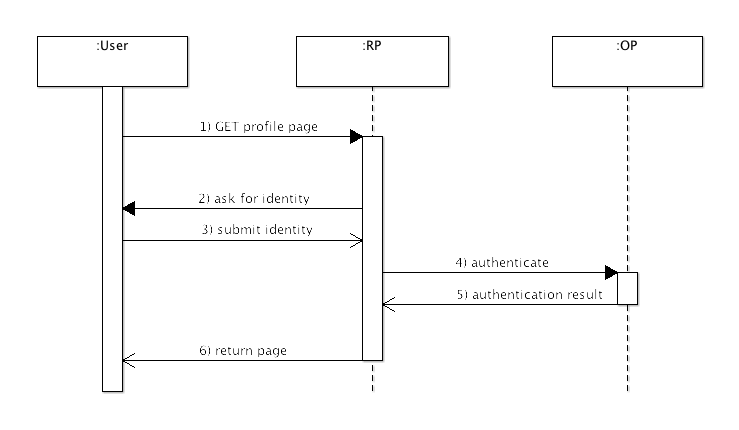OpenID - introduction
Following page quickly describe OpenID protocol.
Main use case
OpenID protocol help to solve one use case - authenticate.
Authenticate use case
Next diagram shows fundamental use case - authenticate. This allows to RP verify that User's identity is correct. In other words it's about answering question "Is user who say he is?". This verification can't by based on user's claim it have to be verified on OP.

Authenticate process description
How it work when user tries to access his user profile on RP site. User is logged on OP but not on RP.

- user tries to access his user profile page, user profile page requires logged user
- user is not logged in (or authenticated) on RP so RP ask user for his identity
- user provides his OpenID identity, it could be URL (http://john.somepage.com) or in some cases email
- PR based on provided identity find OP and than ask OP to verify claimed identity
- OP confirm that identity belong to user that used it
- RP knows user's identity and can trust it. Because of this RP can provide user's profile page
OpenID extensions
Extensions helps to provide mode informations about user to RP or helps to improve user experience with OpenID.
Protocol extensions
Main part of extensions use extension mechanism of of OpenID protocol. This extensions transfer move information during authentication process from RP to OP and in opposite direction.
Other extensions
There are also extensions which are not compatible with OpenID protocol and still are important. For example it's integration google account in OpenID. Google identified user not by URL which is valid user identifier but with email address. Your Google account is john@google.com not http://john.google.com. When RP have to support google account then have to discovery process have to extended to resolve google accounts.



